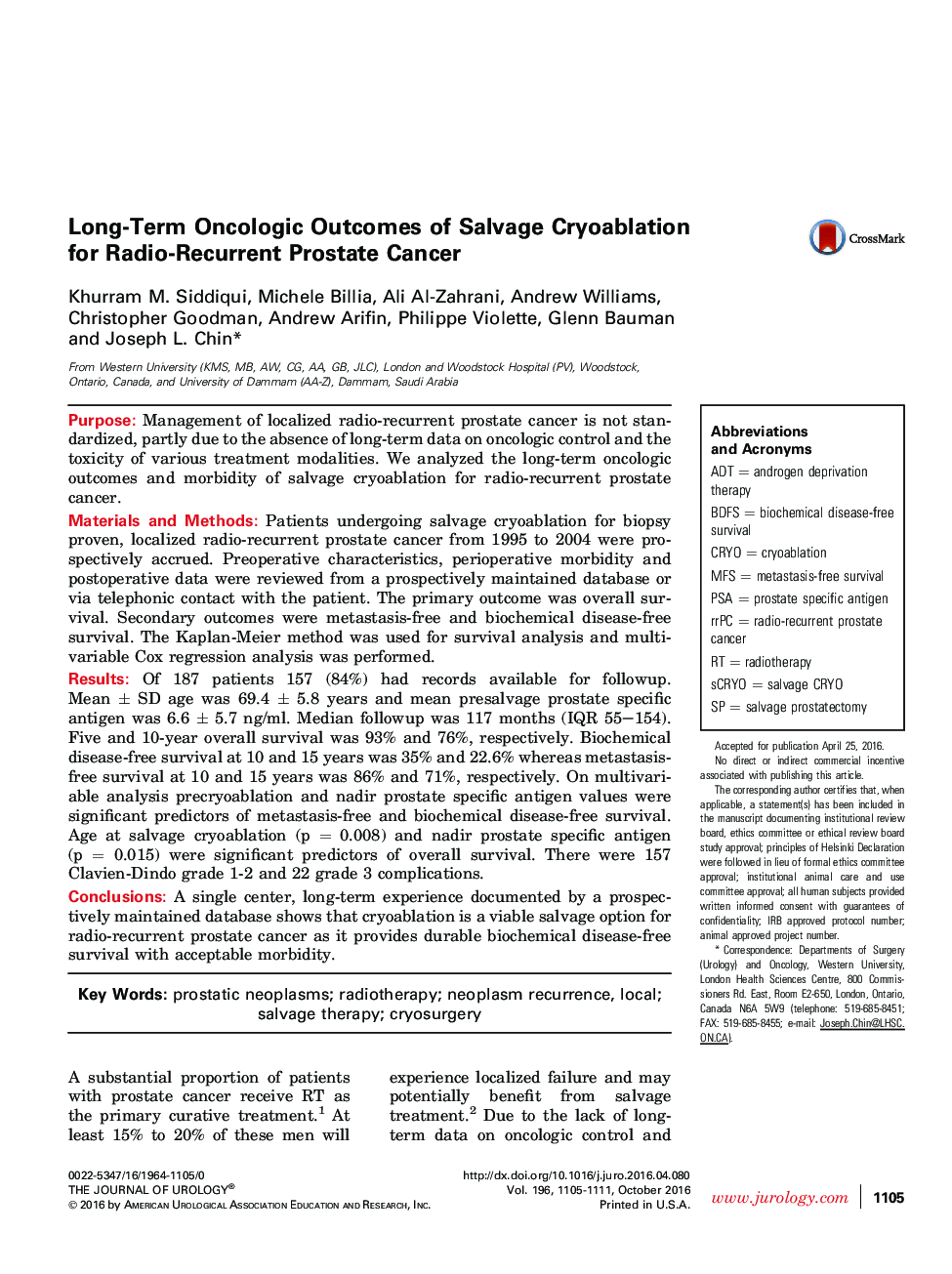| Article ID | Journal | Published Year | Pages | File Type |
|---|---|---|---|---|
| 3857734 | The Journal of Urology | 2016 | 7 Pages |
PurposeManagement of localized radio-recurrent prostate cancer is not standardized, partly due to the absence of long-term data on oncologic control and the toxicity of various treatment modalities. We analyzed the long-term oncologic outcomes and morbidity of salvage cryoablation for radio-recurrent prostate cancer.Materials and MethodsPatients undergoing salvage cryoablation for biopsy proven, localized radio-recurrent prostate cancer from 1995 to 2004 were prospectively accrued. Preoperative characteristics, perioperative morbidity and postoperative data were reviewed from a prospectively maintained database or via telephonic contact with the patient. The primary outcome was overall survival. Secondary outcomes were metastasis-free and biochemical disease-free survival. The Kaplan-Meier method was used for survival analysis and multivariable Cox regression analysis was performed.ResultsOf 187 patients 157 (84%) had records available for followup. Mean ± SD age was 69.4 ± 5.8 years and mean presalvage prostate specific antigen was 6.6 ± 5.7 ng/ml. Median followup was 117 months (IQR 55–154). Five and 10-year overall survival was 93% and 76%, respectively. Biochemical disease-free survival at 10 and 15 years was 35% and 22.6% whereas metastasis-free survival at 10 and 15 years was 86% and 71%, respectively. On multivariable analysis precryoablation and nadir prostate specific antigen values were significant predictors of metastasis-free and biochemical disease-free survival. Age at salvage cryoablation (p = 0.008) and nadir prostate specific antigen (p = 0.015) were significant predictors of overall survival. There were 157 Clavien-Dindo grade 1-2 and 22 grade 3 complications.ConclusionsA single center, long-term experience documented by a prospectively maintained database shows that cryoablation is a viable salvage option for radio-recurrent prostate cancer as it provides durable biochemical disease-free survival with acceptable morbidity.
